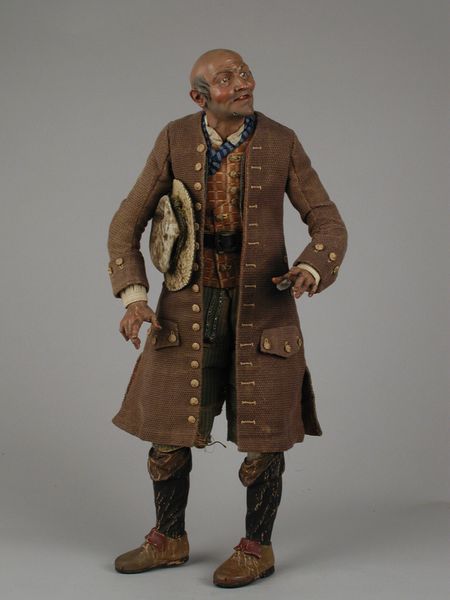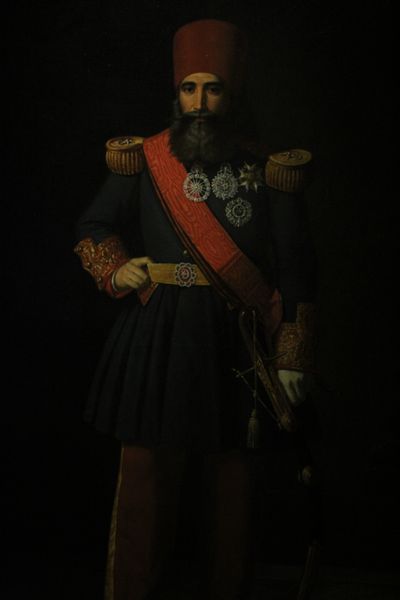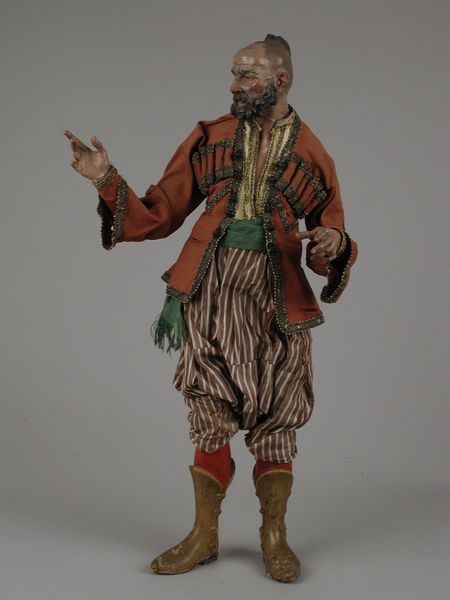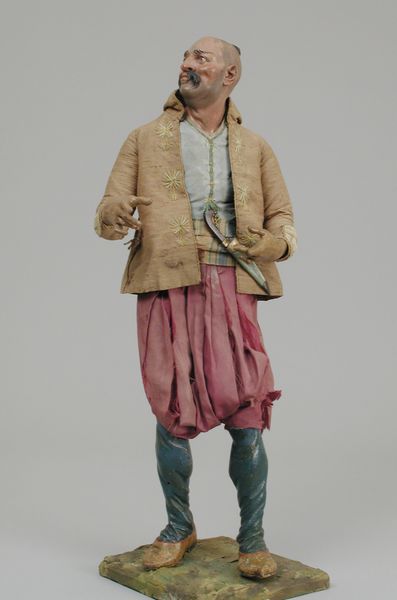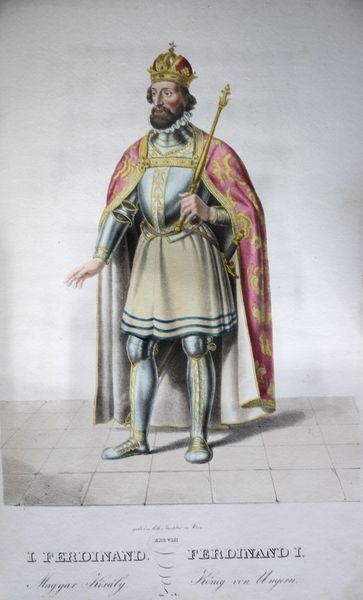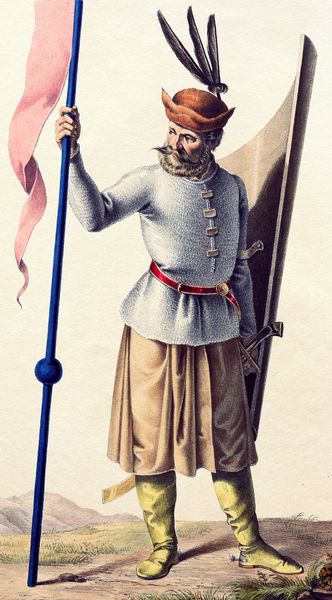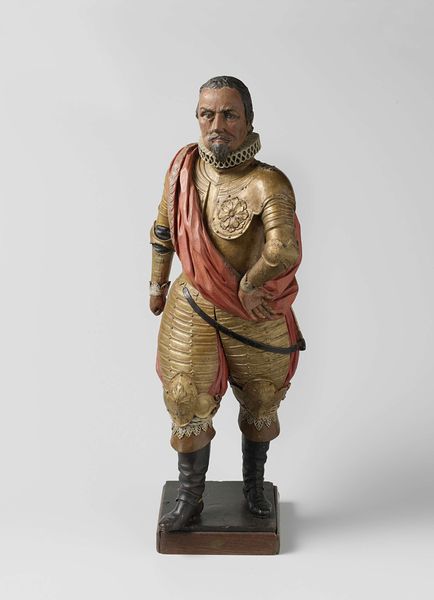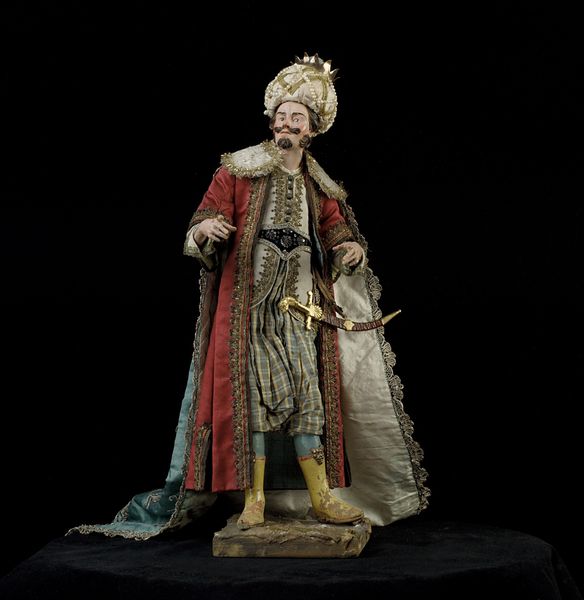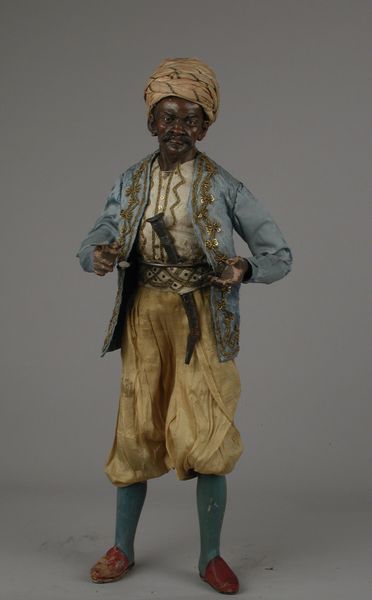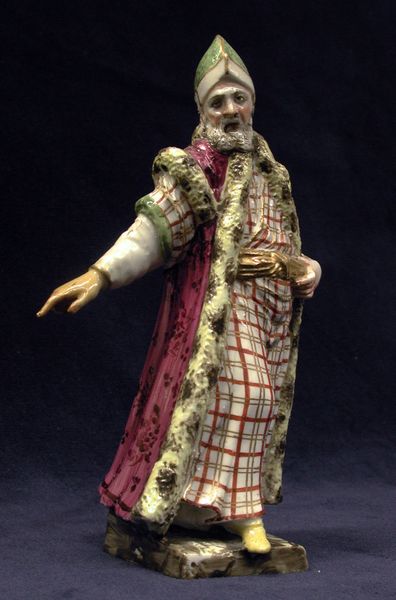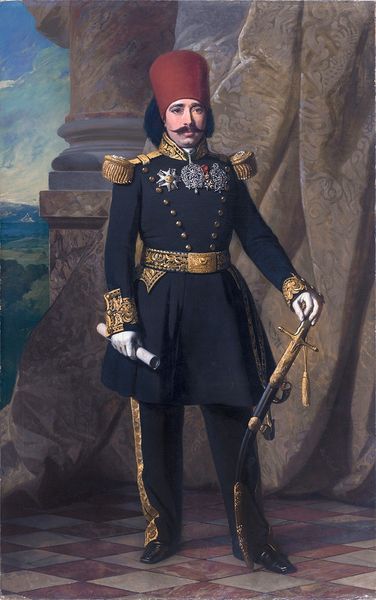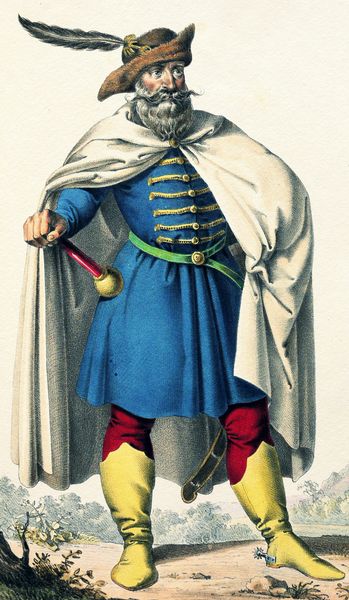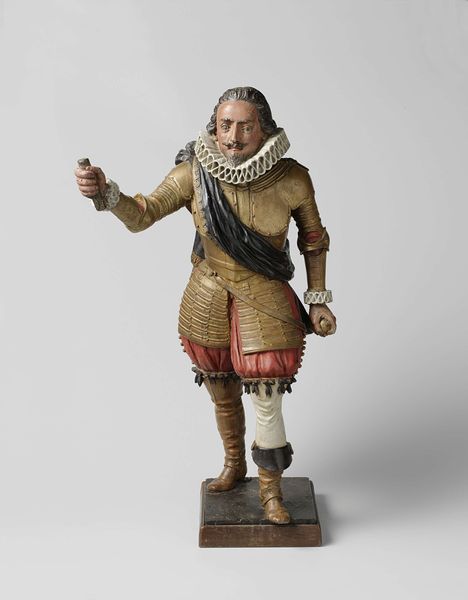
Dimensions: a) H: 14 1/2 in. (36.8 cm); b) L: 8 3/16 in (20.8 cm); c) Diam: 2 3/16 in. (5.6 cm)
Copyright: Public Domain
Curator: What a striking figure! Giuseppe Gori, a noted sculptor, produced this wooden sculpture titled "King's Attendant" sometime between 1750 and 1799. You can currently find it at the Metropolitan Museum of Art. Editor: He certainly commands attention. My first thought is one of exoticism, perhaps a figure meant to represent the 'other'. The bright colors combined with the ornate detailing are rather dazzling. Curator: The exotic 'other' was often represented through portraiture, and this figure, while part of a larger Neapolitan Nativity scene, reflects similar tendencies. Note the emphasis on clothing and accoutrements—the turban, the scimitar. It all reinforces a specific image, carefully crafted, and deployed in many of the arts of the time. Editor: And what about the symbolic weight of the individual items? The turban can symbolize power, spirituality, or wisdom, depending on context. Then we have the scimitar which tells a whole different story. Curator: Absolutely. Context is key, and Nativity scenes themselves served a social function, displaying wealth and status while reinforcing religious beliefs. A figure such as this could reference current affairs or, as we've touched on, reaffirm social hierarchies. Editor: There’s also a curious emotional quality to his face, almost melancholy, in stark contrast to the showy clothing. I can't quite put my finger on it but this emotional detail prevents the piece from simply being a two dimensional display of opulence. Curator: Perhaps Gori sought to humanize what was typically an image designed to elicit wonder and difference. These nativities, displayed in both private and public spheres, became integral elements of courtly life. Editor: Thinking about that, this could function as a symbol of both power and subjugation, a cultural ambassador frozen in time. It presents complex ideas about status, religious devotion, and a world beyond local confines all at once. Curator: Precisely. By observing this figure in the context of nativity practices and Neapolitan social history, the power dynamics embedded within artistic display becomes more explicit. Editor: It makes you think about whose gaze shaped this image, and how it reflects not just its subject, but also its intended audience. Curator: Agreed, examining ‘King’s Attendant’ allows us to really consider how art can participate in the maintenance and potential disruption of cultural attitudes.
Comments
No comments
Be the first to comment and join the conversation on the ultimate creative platform.
